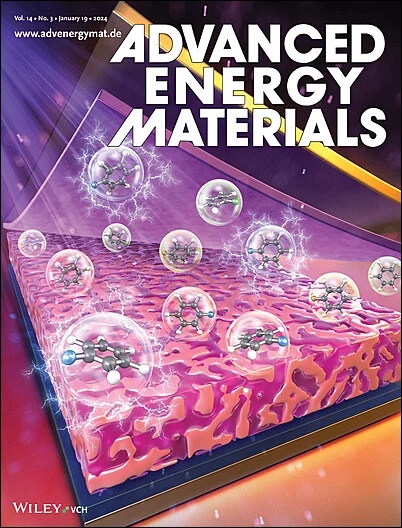Bias‐Dependent Quantum Efficiency Reveals Recombination Pathways in Thin Film Solar Cells
IF 26
1区 材料科学
Q1 CHEMISTRY, PHYSICAL
引用次数: 0
Abstract
Identifying where recombination predominantly occurs—whether at the front interface, back interface, or throughout the bulk—is crucial for optimizing CdSeTe solar cells and many other photovoltaic device architectures. Here, a simple and effective diagnostic is demonstrated: measuring external quantum efficiency (QE) under varying forward biases. The drift–diffusion simulations reveal that each recombination pathway leaves a distinct bias‐induced signature in the normalized QE: a progressive drop at long wavelengths for back‐limited devices, a short‐wavelength decline for front‐limited devices, and a relatively uniform decrease across all wavelengths for bulk‐limited devices. These predictions are validated with experiments on As‐doped and Cu‐doped CdSeTe devices, with and without passivation layers or different front buffers. In each case, the observed bias‐dependent QE spectral changes align with the simulated recombination map. Because this method uses standard QE instrumentation, it offers a broadly accessible and cost‐efficient means to diagnose recombination pathways—extending beyond CdSeTe to other thin‐film and emerging solar cell technologies. By pinpointing recombination bottlenecks, researchers and manufacturers can strategically refine doping profiles, passivation schemes, and interface designs to further improve device performance.偏压相关的量子效率揭示了薄膜太阳能电池的重组途径
确定重组主要发生在哪里——无论是在前界面、后界面还是整个整体——对于优化CdSeTe太阳能电池和许多其他光伏设备架构至关重要。本文演示了一种简单有效的诊断方法:测量不同前向偏置下的外部量子效率(QE)。漂移-扩散模拟表明,每个重组路径在归一化QE中都留下了明显的偏置诱导特征:后受限器件在长波处逐渐下降,前受限器件在短波处下降,体受限器件在所有波长处相对均匀地下降。这些预测通过对As掺杂和Cu掺杂CdSeTe器件的实验进行了验证,有钝化层和没有钝化层或不同的前缓冲。在每种情况下,观测到的偏置相关的QE光谱变化与模拟的重组图一致。由于该方法使用标准的QE仪器,因此它提供了一种广泛可及且具有成本效益的方法来诊断重组途径-将cdset扩展到其他薄膜和新兴太阳能电池技术。通过精确定位重组瓶颈,研究人员和制造商可以战略性地改进掺杂配置、钝化方案和接口设计,从而进一步提高器件性能。
本文章由计算机程序翻译,如有差异,请以英文原文为准。
求助全文
约1分钟内获得全文
求助全文
来源期刊

Advanced Energy Materials
CHEMISTRY, PHYSICAL-ENERGY & FUELS
CiteScore
41.90
自引率
4.00%
发文量
889
审稿时长
1.4 months
期刊介绍:
Established in 2011, Advanced Energy Materials is an international, interdisciplinary, English-language journal that focuses on materials used in energy harvesting, conversion, and storage. It is regarded as a top-quality journal alongside Advanced Materials, Advanced Functional Materials, and Small.
With a 2022 Impact Factor of 27.8, Advanced Energy Materials is considered a prime source for the best energy-related research. The journal covers a wide range of topics in energy-related research, including organic and inorganic photovoltaics, batteries and supercapacitors, fuel cells, hydrogen generation and storage, thermoelectrics, water splitting and photocatalysis, solar fuels and thermosolar power, magnetocalorics, and piezoelectronics.
The readership of Advanced Energy Materials includes materials scientists, chemists, physicists, and engineers in both academia and industry. The journal is indexed in various databases and collections, such as Advanced Technologies & Aerospace Database, FIZ Karlsruhe, INSPEC (IET), Science Citation Index Expanded, Technology Collection, and Web of Science, among others.
 求助内容:
求助内容: 应助结果提醒方式:
应助结果提醒方式:


